To my knowledge, there are three types of court bouillon (French translation of short broth). The first type is the very simple quick broth for poaching fish with a small amount of onion, carrot and celery with aromatics and white wine. Then there are two types of Cajun court bouillon (in Cajun country pronounced koo bee-yahn). The first type is a thick sauce that whole fillets are slowly cooked in. The other Cajun type is similar but more of a fish stew. This recipe is a combination. It allows you a little more freedom with when to make the sauce, how much seafood goes into each portion and when the dish is finished. It can be made a few days before and kept in the fridge or made months in advance and kept in smaller portions in the freezer to thaw and reheat later.
Fish
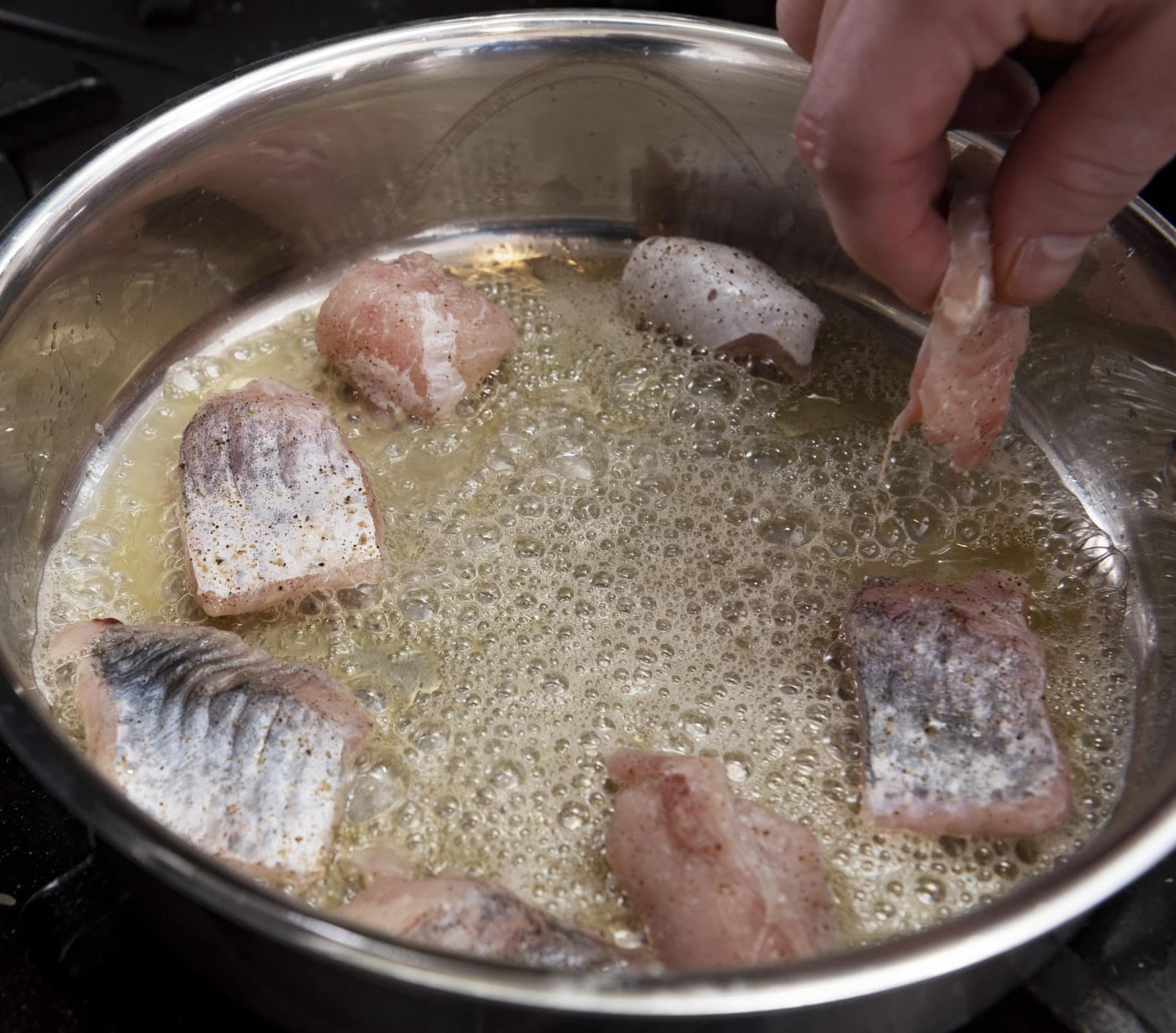
Vegetables
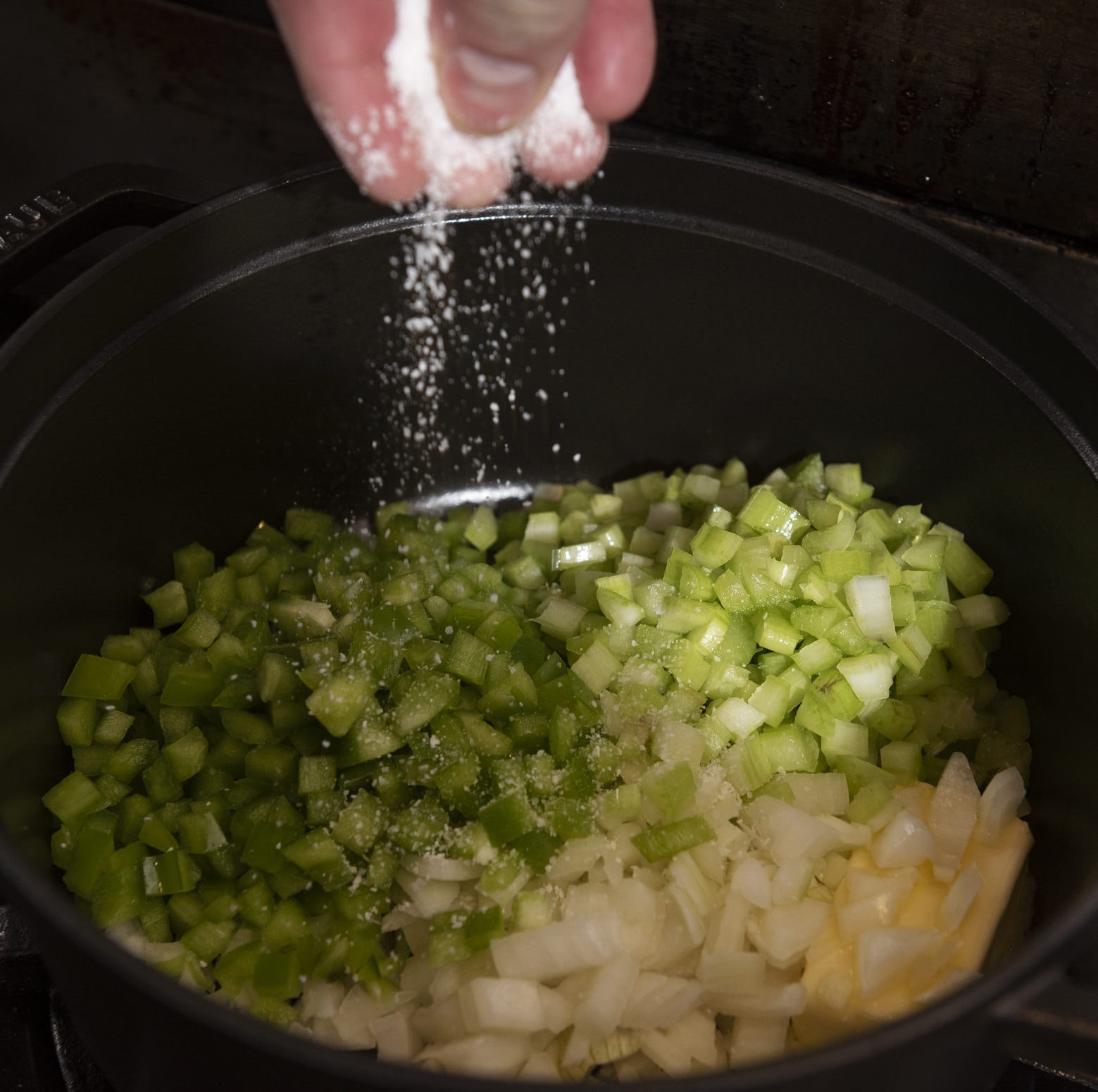
Cooking
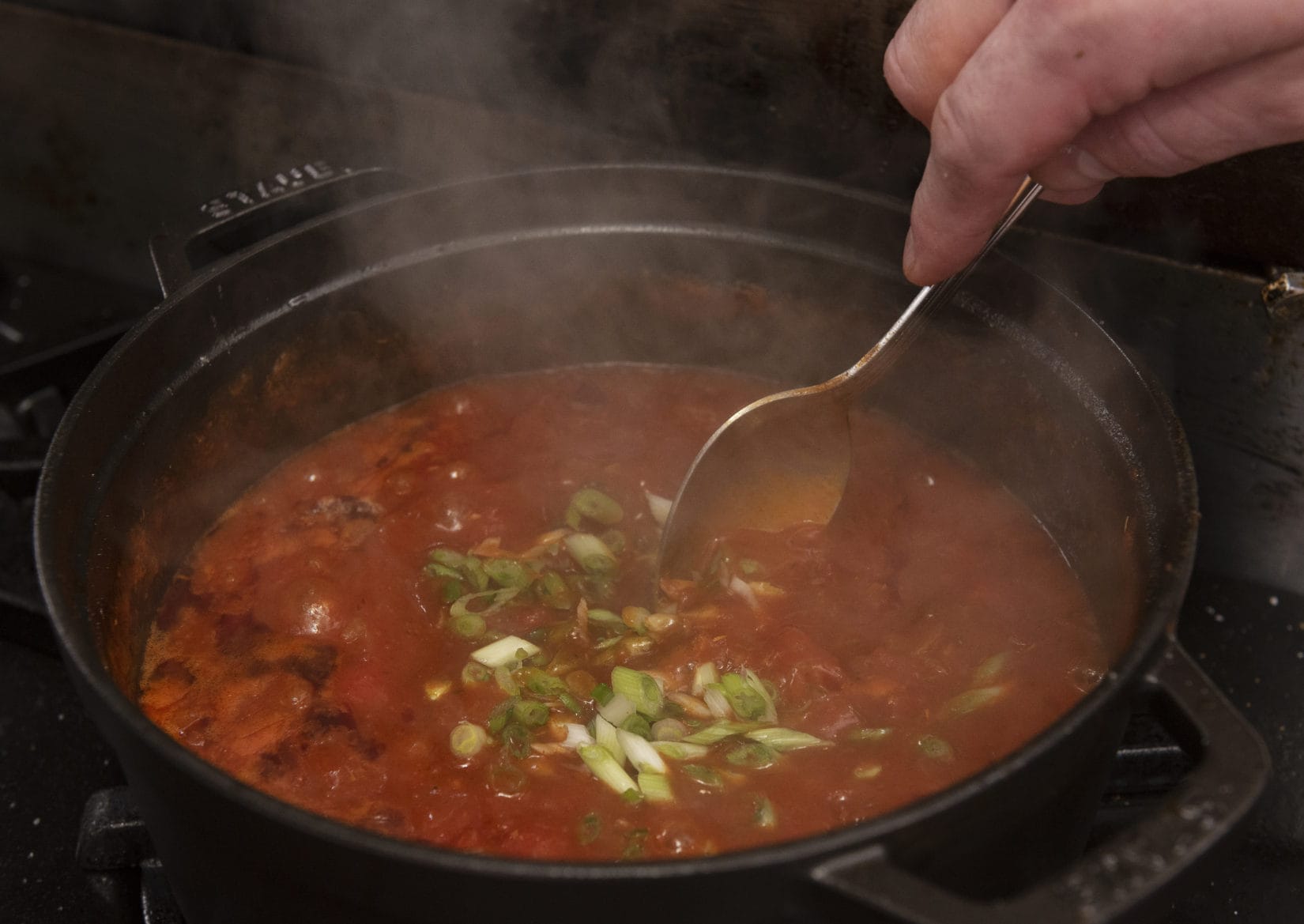
In or Out
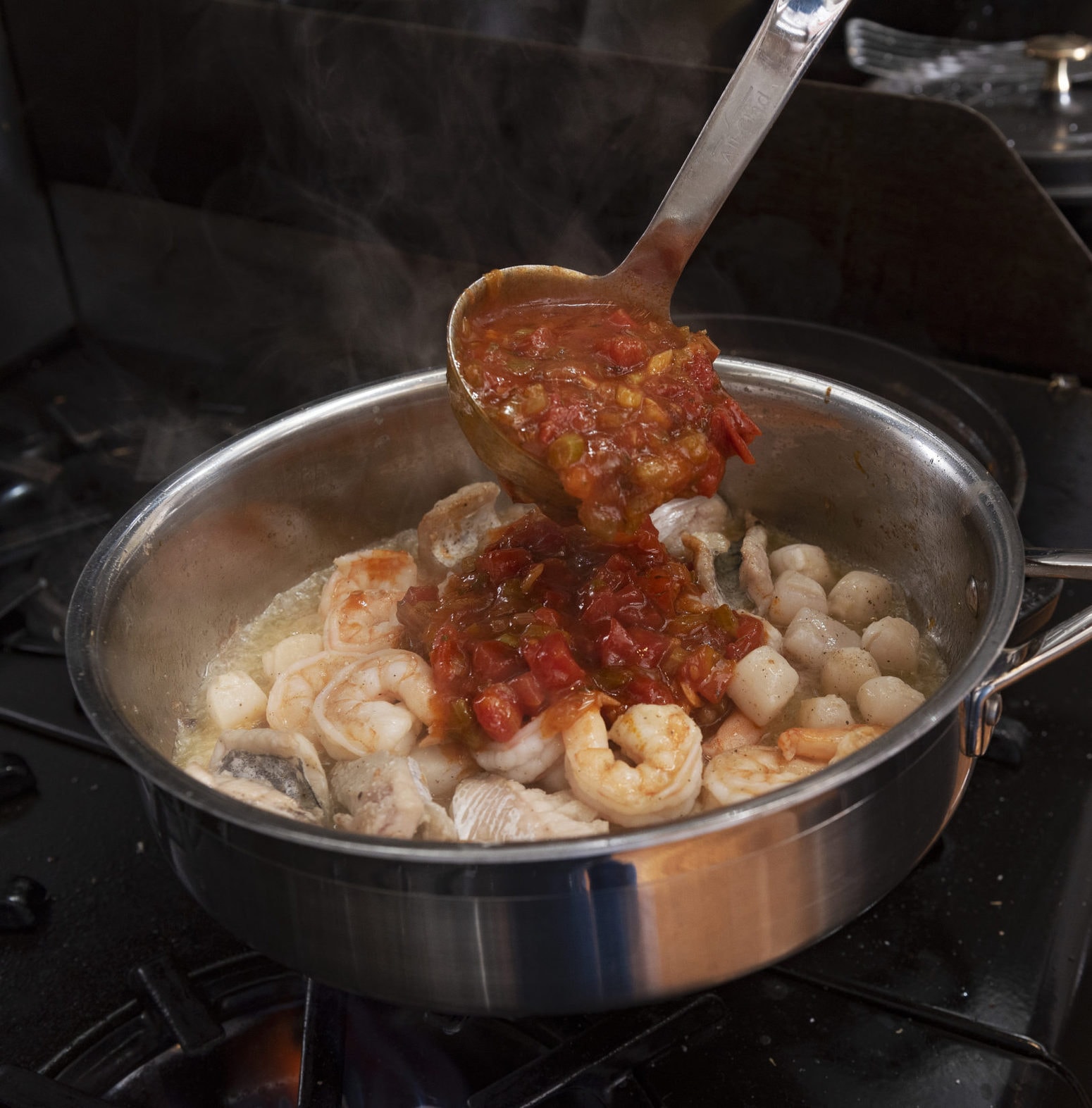
Poach
If cooking in the sauce, the seafood/fish can be heavily seasoned with salt and pepper about 30 minutes before cooking. Once the sauce is finished, turn the heat down to very low (just a few bubbles). Add in the larger fish and carefully push below the surface, cover and cook for 10 minutes. Add in the smaller portions of seafood, then cook another 10 minutes. Remove seafood from the sauce, serve over rice, top with more sauce as needed.
Sauté
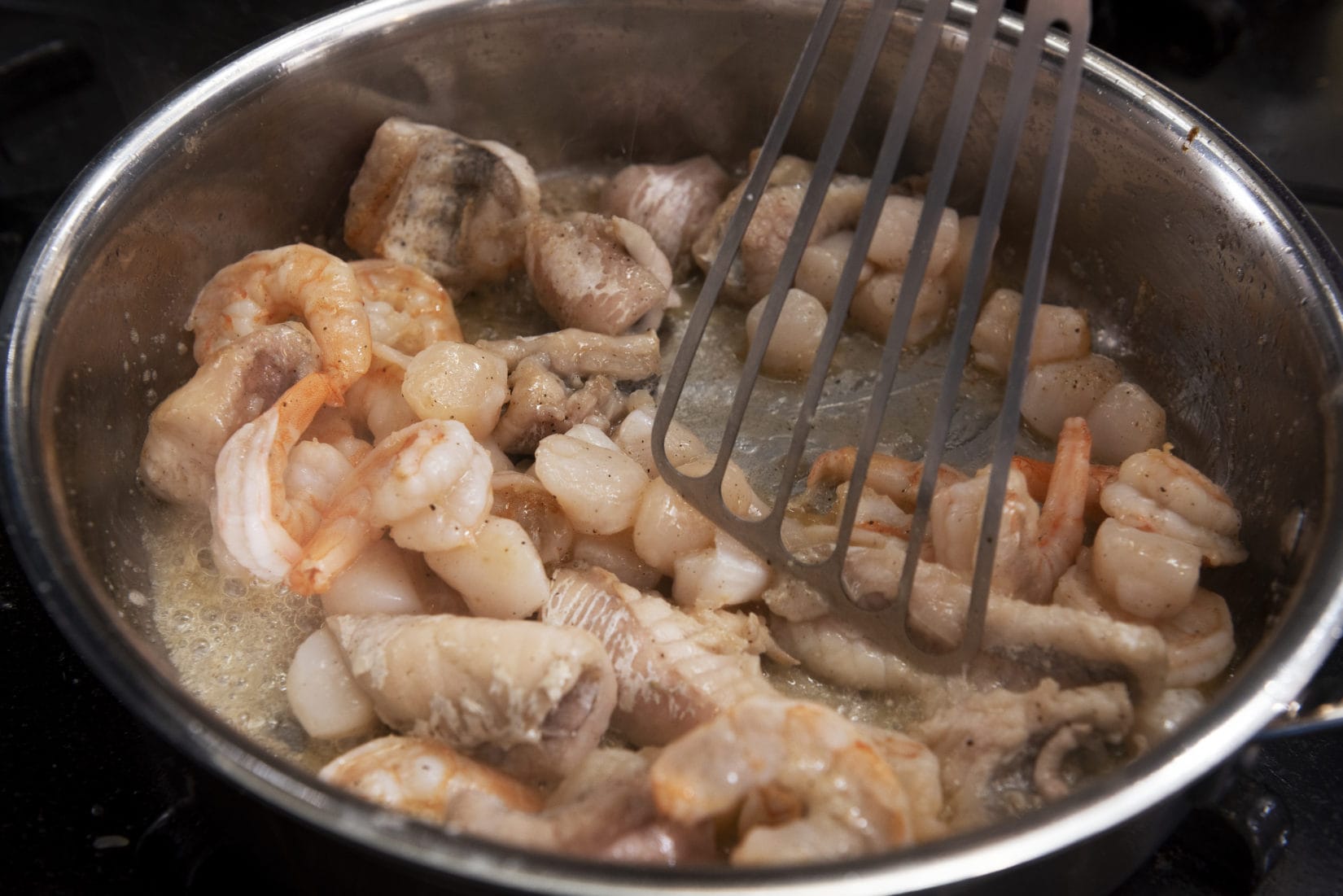
Seafood Court Bouillon (KOO BEE-yahn)
Makes 4-6 Servings
Bouillon
2 stalks celery, diced
1 large onion, diced
½ stick unsalted butter (4 tablespoons) – for the sauce
4 tablespoons vegetable or olive oil – for the sauce
4 to 5 cloves of garlic, minced
1 jalapeno minced, keep seeds in to make the dish spicier
3 tablespoons tomato paste
2 tablespoons flour
3 to 4 cups peeled and diced tomatoes or 28-ounce can diced tomatoes
½ teaspoon dry oregano (1 teaspoon fresh)
1 teaspoon Spanish paprika
1 tablespoon Worcestershire sauce
1 lemon, juiced
2 tablespoons sugar
1 bunch green onions, thinly sliced (separate greens and whites)
½ bunch flat parsley, minced
Salt and pepper to taste
Seafood
(Can be placed in as whole fillets, slices or pieces)
4 tablespoons vegetable or olive oil – for the seafood
In a saucepan, small stockpot or Dutch oven, sauté onions, celery and bell peppers in butter and oil with a heavy pinch of salt until edges start to brown. Add in minced garlic and jalapenos and sauté until fragrant, about 1 to 2 minutes. Add in tomato paste and cook until color deepens and starts to stick to the bottom. Add flour and stir until incorporated. Add tomatoes, another pinch of salt, herbs, spice, Worcestershire, lemon juice, sugar and whites of green onions. Bring to simmer, cover and simmer for 15 to 20 minutes, stirring every 5 to 6 minutes to prevent the sauce sticking to the bottom. If you are serving over rice, start to cook it separately at this point.
On a tray or plate, season the seafood heavily with salt and pepper. In a separate pan with short sides turn on to high heat, add a half stick of butter and olive oil. Let fat melt and almost start to smoke. Add the largest set of seafood or one that needs to cook the longest. Once the heat in the pan starts to recover and seafood starts to get some color, add the next type of seafood and cook the same. Once all of the seafood is in the pan and partially cooked, add enough sauce to cover all the seafood. Bring to a simmer and season to taste. Serve over rice and enjoy.

Brook Harlan is a graduate of the Culinary Institute of America in Hyde Park, New York. He is a culinary arts instructor at the Columbia Area Career Center.


